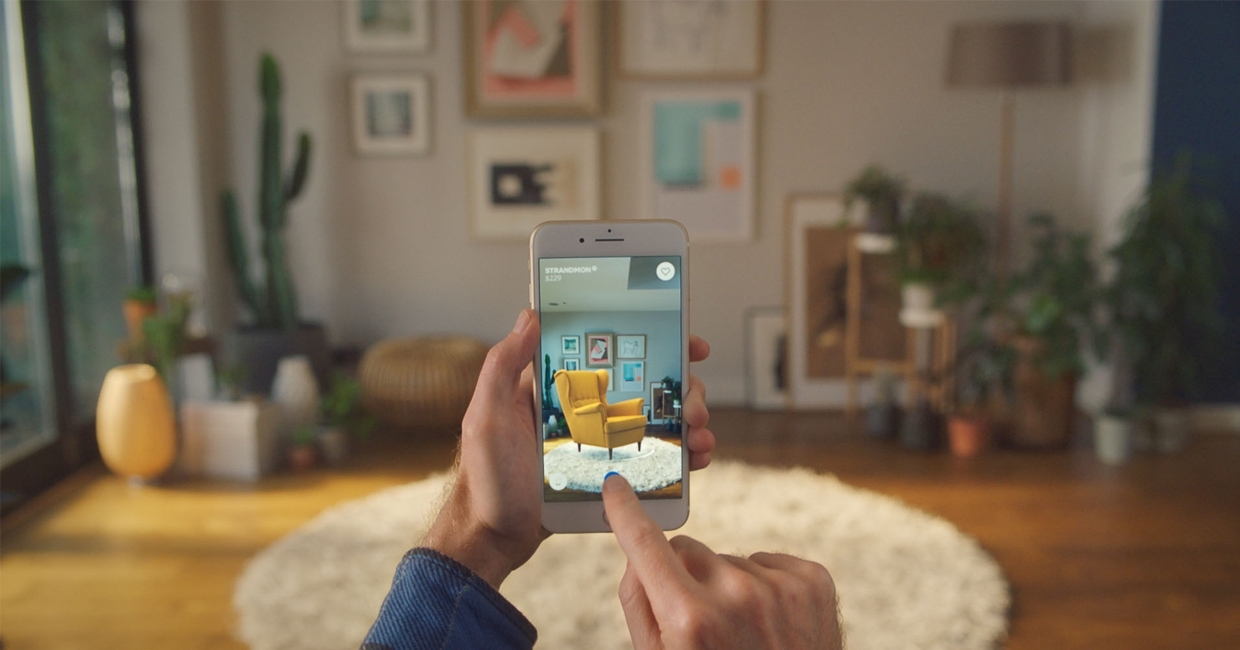Augmented reality (AR) is set to revolutionise the way people shop for furniture online – so why hasn’t the industry embraced it yet?
Furniture News asked the experts urging the trade to get in on the ground floor – Dalia Lasaite, CEO and co-founder, CGTrader; Paul Galley, MD, Symmetry CGI; Paul Stott, owner and director, The Virtual Works; Rob Walker, MD, Orbital Vision; and Janus Jagd, co-founder and CEO, Cylindo – how much demand they believe there is for AR in our trade, and what's holding it back …
Dalia Lasaite: The global pandemic has certainly accelerated the ecommerce boom, creating a high demand for online shopping and buying. Most consumers were in lockdown and decided to update the space around them in their homes.
But furniture upgrades and home improvement projects are hard to make decisions for online, without feeling the fabric or seeing the staged environment of a showroom. For furniture companies, this meant challenges in updating their website experiences to entice the customer to purchase products. Lockdown also meant no production or photography set-ups to visualise the pieces or spaces, unless they already existed pre-pandemic.
AR and 3D models are the perfect solutions to the challenges of a physical world. The digital technology is able to produce not only lifestyle scenes with placement of pieces, but also place the piece in your desired space with AR. The cost of 3D modelling and using AR is also more economical than the logistics and production of photography.
The only hold-back currently is the lack of awareness around the digital solution, and the question of who would manage the process from an ecommerce company. There’s usually a hesitation to innovate – unless your competitors are toying with new technology – but once the realisation sinks in that no expertise is required to get started, the benefits of AR and 3D are seen quickly, from positive website engagement metrics to overall revenue increases.
Paul Galley: AR is appearing more and more as part of everyday life. It’s used on TV (Strictly Come Dancing, the Tour de France, news clips), and we’ve seen it on sports clips promoting stadiums. It’s also appearing more frequently as part of the online imagery packages – from televisions to kitchen products, rugs and furniture.
Now is a perfect time to be getting to grips with AR, and a number of different factors will drive its growth. Consumers are increasingly more confident to buy online – we’re carrying less cash and are used to digital payments. There’s less hassle shopping online, and delivery is usually very quick. Online sales are steadily increasing YoY – the boom created during Covid saw online sales peak at 37.1% of all sales, and even though that’s dropped back to 25.9%, they are possibly up +50% YoY.
The technology we all carry in our pockets is capable of supporting AR images. Any phone with an OS more recent than iOS 8 and Android 4.0.3 will support AR (estimates suggest that’s over 50% of devices). I would think you’re safe to assume that the tech-savvy people with the new phones are the ones shopping online, which could mean that virtually everyone shopping online has the ability to view AR.
Paul Stott: A third (33%) of people are more likely to make a purchase from AR-enabled product pages, versus those without. There’s no doubt it works, as the stats report, but the challenge for retailers is finding the right provider that understands furniture and can provide the suitable assets to fit the AR software. Without the assets, the AR software is a white elephant – a bit like opening a shop but not having anything worthy to put inside it. It still requires good assets to convince the buying public that what they are seeing is as photorealistic as possible. I recognised AR would play a significant role in online retail from an early point, but was so disappointed in how restrictive and expensive to access it was.
Rob Walker: Online shopping is more popular than ever, and customer expectations are only growing. People want to see and experience as much as they can online before buying the product. With AR, they can test out the product before buying it (at Orbital, we always say we are a one-stop-shop for the furniture industry, supplying you with everything you need to sell a product online, just not the physical product itself!).
Many businesses have been forced to close all stores and move solely online, so implementing AR features on their sites is crucial to increase and maintain sales. One of the main challenges has been the speed at which these 3D models can download to a device. AR uses a live model, and the filesizes of these are quite large in order for the textures and details to remain realistic, which means the models can often take a while to download. However, due to the introduction of 5G, AR is becoming more accessible to everyone, and is expected to become an online shopping essential in the coming months.
Janus Jagd: The disjointed user experience was the key reason why AR has had a low adoption rate. Up until a few years ago, customers had to install an app to use AR. However, furniture retailers soon realised that it’s hard to convince customers to download an app they won’t use often. Furniture is not a frequently bought item, so there is a big chance customers won’t bother downloading an AR app.
Today, we are finally seeing the new generation of AR experiences – web-native, meaningful, relevant, with a frictionless and delightful user experience – the last stepping stone towards the mass adoption of AR in furniture.
Mobile is an integral part of the way consumers shop nowadays, from browsing and research to comparison and purchase. With more than 3 billion AR-compatible devices, web-native AR can fuel furniture businesses’ growth. As we move toward more interactive experiences on Web 3.0, web-native AR will become an inevitable part of the buyer’s path to purchase – especially in the furniture industry.
Read the full feature in the December 2021 issue of Furniture News magazine.
Pictured: IKEA's Place app in action









